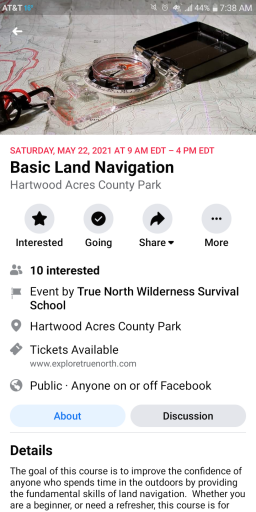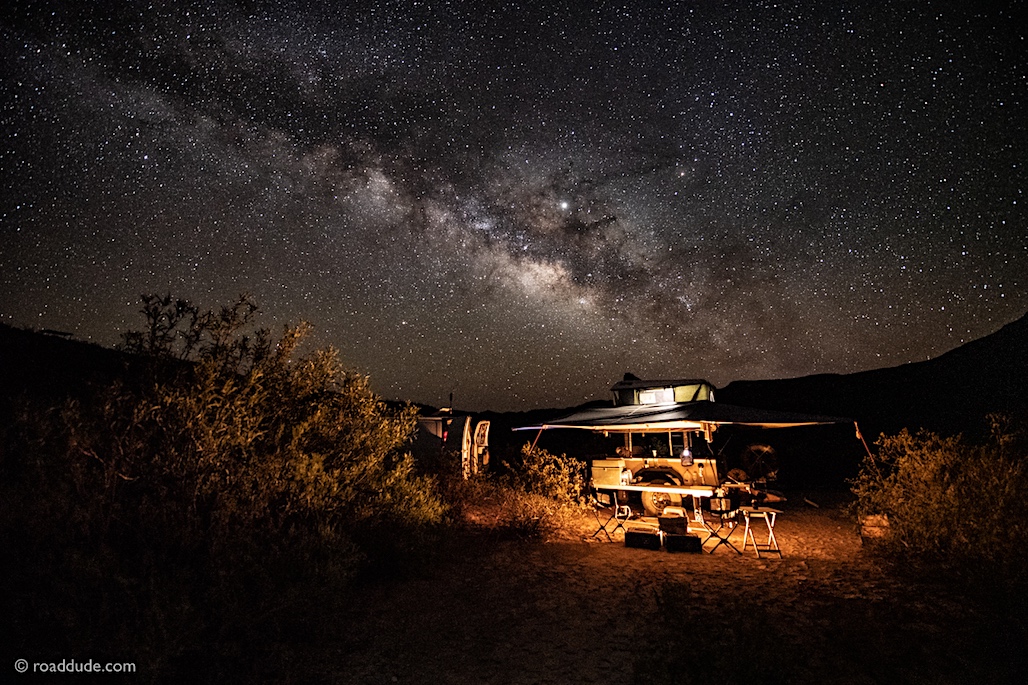
Educator I
- 10,890
- First Name
- Jim
- Last Name
- Bro
- Member #
-
12989
- Service Branch
- USAF DAV

Educator I
12989

Educator I
12989
I am not a beginner, per se, but I can see he's very good for taking an ABSOLUTE beginner and making them comfortable. Not using the technical terms, and such and going over the very basics forst. Not knowing him, and just based on his videos, he would probably also be a good teacher of little kidsBushcraft Padawan has a very good series on land nav basics. I watch it whenever I want a refresher.
Bushcraft Padawan
Funny. I was just working with 4 different compass models across 3 brands and doing some map work with them at the kitchen table, just as a comparison of thier features.Ok now thinking on all this i just replaced my decoder ring compass, cost $50 but I like it, got :Brunton Truarc20 Rare Earth Mirror Compass
Jim

Enthusiast III
22993
you must be a unicorn!Funny. I was just working with 4 different compass models across 3 brands and doing some map work with them at the kitchen table, just as a comparison of thier features.
I dont have the Brunton 20, but I recently bought the Brunton TruArc 15. I like the idea of a quality US made compass, so I wanted to compare it up against the old Silva Ranger Type 15 and my new Suunto MC-2. As another "also ran", I have along a Brunton TruArc5.
All except the old Silva have a small magnifier built into the base plate. New Silvas do have that feature. All except the TruArc 5 are mirror-sighting, which I prefer.
The toolless declination adjustment of the Bruntons takes some getting used to. To me, the Silva wins here, because the tiny adjustment screw is easily accessible at the top of the dial, and therefore easily adjusted while the compass is overlaid on the map legend. And despite popular concerns, if you tie the tiny screwdriver into tha lanyard, you will not lose it. I've been using mine since the mid to late 1980's and I've never lost it. One bonus the TruArc 15 has over the typical Silva or Suunto is that the TruArc15 has hash marks for every degree as opposed to every 2 degrees. Really, either is fine, since on the 2 degree compasses, you use the space between the hash marks as a degree and you are almost as close. The TruArc 5 has the typical 2 degree hashes, as does the Suunto and Silva.
Another feature of the Bruntons is that you get a Global Needle, and adjustable declination even on "lesser" models, such a sthe TruArc5, which can be had for about $26USD at Kittery Trading Post. Probably even cheaper on Amazon.
The placement of the tie out for the Brunton TruArc15 makes it just a bit more cumbersome to lay the opened mirror flat against the map. A seemingly small trifle, until you realize how often you have to do that. It defies logic that they would place it there for any other reason than to be different. And different for the sake of being different is not good, in my view. Different for functionality sake is what should be happening.
Brunton TA15 has also added another magnifyer, at the base of the bezel, so that the degrees can be more accurately read. I very much like that, and the fact that it has reverse azimuth readings in green along an inner ring of the dial. UNFORTUNATELY you NEED that second magnifyer and inner ring of hashes, because the blasted thing does not have a line of direction, or even a way to read your bearing, on the baseplate near the hinge of the mirror. All of the other mirror sighting compasses do have a mark there, and I find this highly inconvenient, and short sighted on Brunton's part. Bad form. Again, different for different's sake, not for expediency or ease of use.
For actual declination adjustments, although the Brunton is toolless, I find it can be a little awkward. It is friction oriented and you need to know where to grab and where to spin, and that can be a bit of an unknown to the uninitiated. The Suunto is second, because it uses a nice little set screw for very accurate adjustments, but that screw is on the back of the bezel. The Silva beats them all with the set screw on top of the bezel, but it also beats them in another way. The North-South lines drawn to appear WITHIN the capsule are very clear and run the full lengthe of the capsule in the old Silva. And they are drawn at the regular intervals, uninterrupted all the way across. The Suunto interrupts those lines for the sake of adding its logo, and the Brunton "Global Needle" and its logo also interrupt those lines, which can make it challenging to adjust your declination accurately. The old Silva Ranger Type 15 does it all, and flawlessly.
Even with the circular level on the Brunton True Arc 15, I find the Suunto MC-2 to be the best of the new compasses I have seen. The new Silvas may be every bit as good as the old. I dont know, but the Brunton is still made in the US, the Suunto is still made in Finland. The Silva is, unfortunately made in China. As I have said, it may be every bit as good. But I take points off for outsourcing.
I havent written much about the Suunto, but thats mainly because it is very very good, and there is very little I could say bad about it. It is closest in operation to my old Silva, the only practical difference being the declination set screw being on the backside. And the logo interrupting the North South lines in the capsule. That's it. That's the worst of it. Everything else is great!
Given everything I've seen, I would continue to rely on my 1980's Silva over anything else I have...if only it hadn't developed a tiny bubble when it's a bit on the colder side. The new Suunto MC-2 comes in at a VERY close second. Which makes the Suunto first, because I cant trust the Silva in cold weather anymore. And even though the Brunton comes in at 3rd for some inconveniences, it is still an excellent compass and I would rely on it from what I've seen so far. It's also the only one with a Global Needle. You have to almost double the price of the Suunto MC-2 in order to get its Global Needle derivative.
That might just be all I have to say about these 4 models. But in fairness, I may end up with a new Silva, to see if the quality and features are up to par with the old ones. If they are, it might not matter where they are made.
Thanks for your time if you read this all and I hope it helped if you are trying to make a decision.
Unfair? Naw. No offense taken. I am no expert by any means, but I think I have the Fundamentals. My father was back from Nam and taught us a bunch of that stuff in the 1970's. In '80, we moved from greater Boston up to the Adirondacks in upstate NY. By then I was 10. We hiked, hunted a little, logged a lot.you must be a unicorn!
From Mass, knows how to use a map and compass. Mind blown. Whenever I see Mass hikers in the Whites, "I see dead people" goes through my thoughts. I know its unfair, but usually the deaths in the Whites are people from Massachusetts.
Only place I foresee needing a compass is above treeline in whiteout conditions. I use a map constantly when hiking.
I was going to suggest joining the Army to learn orienteering. The lessons I learned in Basic Training walking the woods at night in Missouri, I've never forgotten and I am the most directionally challenged person in the world.
When I was stationed at Ft Bliss, we were out near the Dona Ana range doing some field exercises, I think it was preparing for an ARTEP evaluation. I was in the CP van doing radio watch and about midnight, 2am I get a call from one of the OP's that they see tracers going through our perimeter. Bump it up to Battalion and they say its probably from the live fire range that were were fairly close to. Call back the OP, and pass on the information, they disagree. I open the door to the van and see the tracers going by the Antenna Mast Group for our Patriot battery. Call back BN and inform them what is happening and I get a knock on door. Open the door and its an M1 tanker, lost, wanting to know where they were. Showed him the map overlay he said thanks, and drove off. I still laugh at that memory. The tank didn't hit anything valuable. A Patriot missile battery went for about a $billion at the time.

Member III

Advocate III
20990
I found Bliss to be the easiest place to navigate out of all the army bases... I was stationed there with the 108th Airborne for 2 years before our battery was reassigned to Fort Hood (another rash to navigate corse). The worst corse I ever had to navigate was at Fort Drum, the tees and bush were so thick there wasn’t anything to terrain associate, so dead recconning diddnt do any good... I ended up shooting an asmith with my compass on blades of grass... and to make matters worse, they made us do the corse in the dark... and the final point was our battalion HQ.you must be a unicorn!
From Mass, knows how to use a map and compass. Mind blown. Whenever I see Mass hikers in the Whites, "I see dead people" goes through my thoughts. I know its unfair, but usually the deaths in the Whites are people from Massachusetts.
Only place I foresee needing a compass is above treeline in whiteout conditions. I use a map constantly when hiking.
I was going to suggest joining the Army to learn orienteering. The lessons I learned in Basic Training walking the woods at night in Missouri, I've never forgotten and I am the most directionally challenged person in the world.
When I was stationed at Ft Bliss, we were out near the Dona Ana range doing some field exercises, I think it was preparing for an ARTEP evaluation. I was in the CP van doing radio watch and about midnight, 2am I get a call from one of the OP's that they see tracers going through our perimeter. Bump it up to Battalion and they say its probably from the live fire range that were were fairly close to. Call back the OP, and pass on the information, they disagree. I open the door to the van and see the tracers going by the Antenna Mast Group for our Patriot battery. Call back BN and inform them what is happening and I get a knock on door. Open the door and its an M1 tanker, lost, wanting to know where they were. Showed him the map overlay he said thanks, and drove off. I still laugh at that memory. The tank didn't hit anything valuable. A Patriot missile battery went for about a $billion at the time.

Member III

Member III
8300


Advocate III

 roaddude.com
roaddude.com

Explorer I
Awesome! Thanks for sharing those titles!Lots of good info and links here, and cool stories, too.
Orienteering used to be an important skill to learn if spending a lot of time in unfamiliar and rugged terrain. I've been playing with compasses and maps and topos since I was a kid on bases around the world. Mostly deep woods and creeks and streams, etc. Then spending a couple months in the desert around Ft Bliss in the far west Texas borderlands gave me a different sense of depending more on sun, sky, and stars.
For fun, still, when driving I will often consult a paper map with a destination several hundred miles away in mind; get a general bearing, then use only sun and stars to navigate my way there. Limited by surface roads, yes, though it's hoot to document my route then look at a map after to see how well I did at finding the most direct route. I'd probably drive any companion nuts doing this, though traveling solo affords me the pleasure of doing what I want when I want.
Compass info's been covered well in this thread. I really like my old Silva Guide still, though use my nicer Suunto MC-2 more when canoe orienteering. Yeah, it's a thing and I love it. There are lakes that have canoe orienteering competitions. Best lakes are those with a lot of islands and convoluted shorelines. Easy to get turned around going around an island into a narrows you didn't expect.
Best book I have on orienteering is Be Expert With Map & Compass: Orienteering Handbook by Bjorn Kjellstrom & Karina Kjellstrom Elgin. Over 500,000 copies sold and chock full of info on using map alone, compass alone, or both together.
Best book I have on pathfinding without map or compass but employing "methods used by primitive peoples and early explorers;" i.e. paying attention to wind, sky, smell, birds and animals, etc is the great Harold Gatty's Finding Your Way Without Map or Compass. Classic old school stuff from Gatty and Bradford Angier both are fav reads when camping or planning a next adventure.
.

Roaddude - On the Road In North America - ROADDUDE
Roaddude - Traveling Photographer/Writer/Artist On the Road In North America. Gear, reviews, people, places, and culture.roaddude.com

Advocate III
.Awesome! Thanks for sharing those titles!
.Kjellstrom, of course being one of the founders of Silva Compasses, is a traditional stand by. Old school but that's good. I have heard that a lot of the e-book versions are missing pages and such. I dont know.
I believe I have one or two Copies of Angier's "How to Stay Alive in the Woods, myself. Also a bit outdated, as not many of us wear thick leather hiking boots anymore, and the parts on breaking in those types of boots are moot with newer footwear tech. Relying on wool - still a great idea, but obviously we have so many new materials in our jackets and sleeping bags. But still good info on what plants you can eat
Granted I am no survival expert, but its fascinating reading, and you will definitely get something out of it

 roaddude.com
roaddude.com

